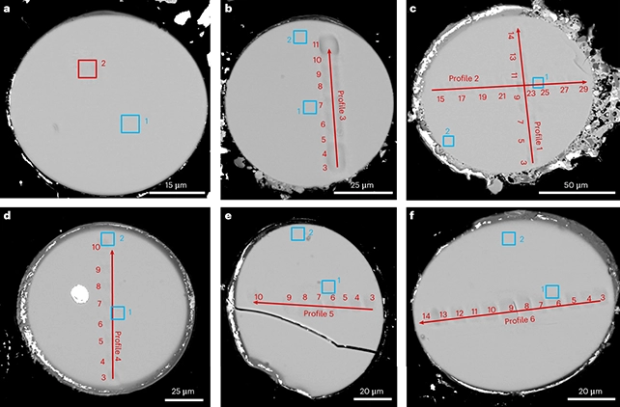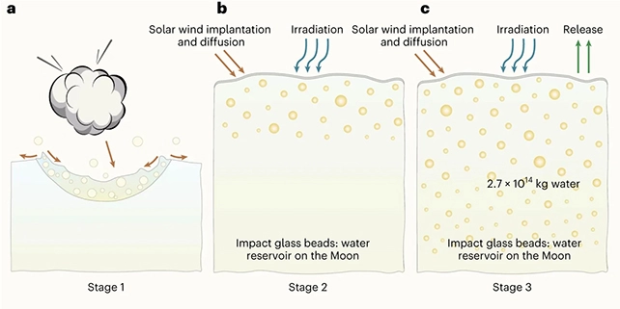[ad_1]
Humans know there is water on the Moon, but how much exactly is completely up for debate. New research suggests there is much more than we first anticipated.

VIEW GALLERY – 3 IMAGES
Originally humans believed the Moon was a dry, desolate place, but samples obtained by NASA’s Apollo mission revealed to scientists tiny microscopic glass beads that form when pieces of space rock collide with the surface of another object. After the impact, these beads rapidly cool and preserve their contents which researchers examined. The beads contained hydration signatures, which were created, in part, with help from the Sun as the solar wind containing hydrogen ions combines with oxygen that’s within the lunar soil.
So, here’s what the newest research suggests. Solar wind battering the surface of the Sun is combining hydrogen ions with oxygen already present within the lunar soil. The impact glass can store this water, with researchers estimating that each glass bead is capable of holding up to 2,000 micrograms of water, or 0.002 grams of water, for every gram of the particle’s mass. Notably, the researchers continued to explain within their study that evidence garnered from hydration analysis suggests that these impact beads can accumulate water over just a few years.

So, why is this important? Reports indicate that the Moon could have as much as 297.6 billion tons of stored water, and if proven to be true, it will be extremely useful for future NASA and other fellow space agencies looking to build a sustainable presence on the surface of the Moon. NASA is planning on returning to the surface of the Moon in its Artemis 3 mission.
Following that mission, and its results, NASA plans on establishing a lunar base that will be much more comfortable with the abundant presence of water as it won’t require any being transported from Earth to the lunar surface, which is both costly and time-consuming.
Furthermore, the researchers behind the study, which was published in the scientific journal Nature Geoscience, write that our Moon is likely not the only “airless body” to harbor vast amounts of water as other moons within our solar system are also capable of storing solar wind-derived water.
In other space news, NASA’s Hubble Space Telescope has shocked many eyes from around the world with its new image of the globular galaxy Messier 55. The famous telescope captured just a portion of the globular galaxy that’s located approximately 20,000 light years away from Earth. If you are interested in reading more about that story, check out the below link.
[ad_2]